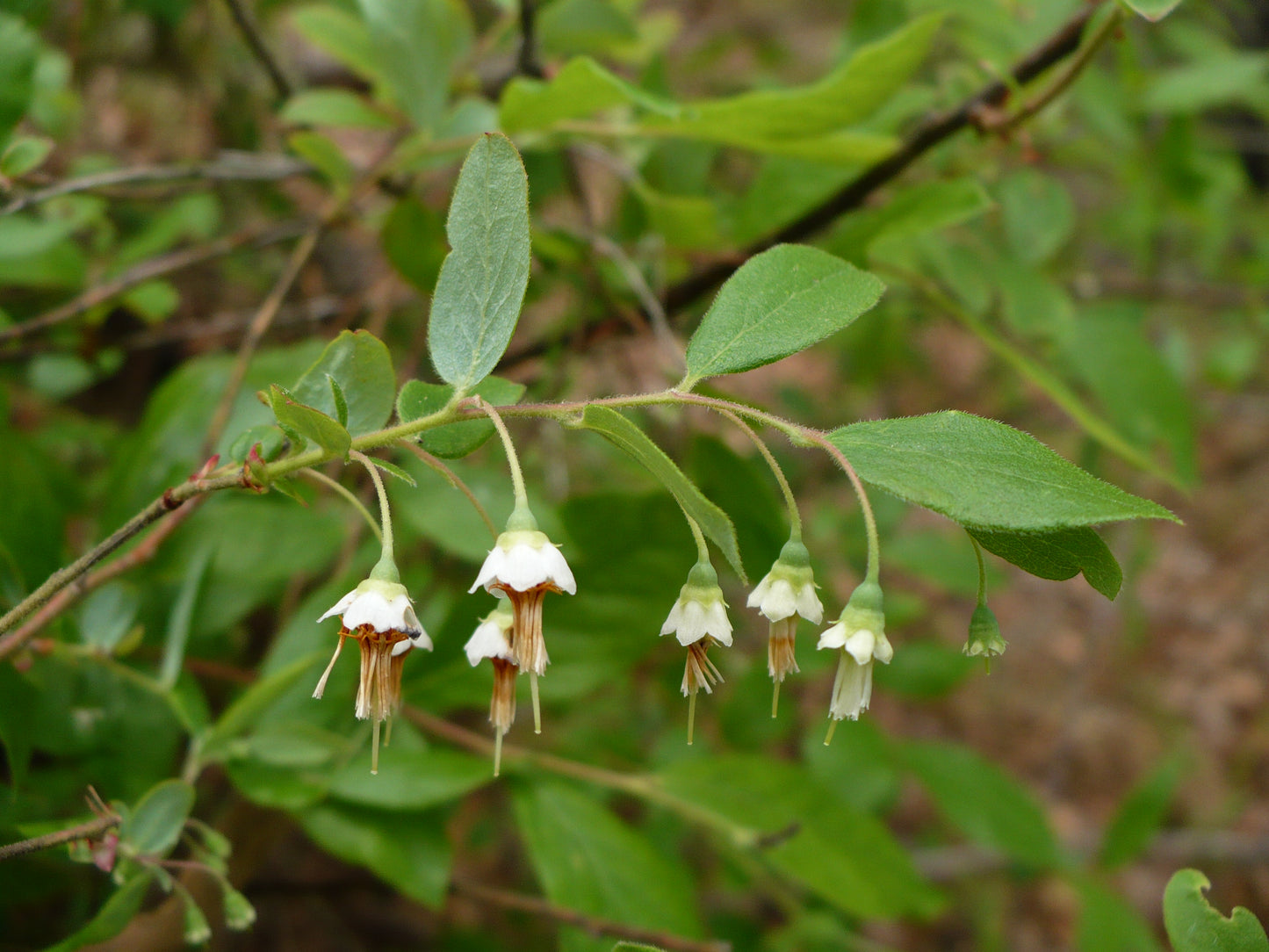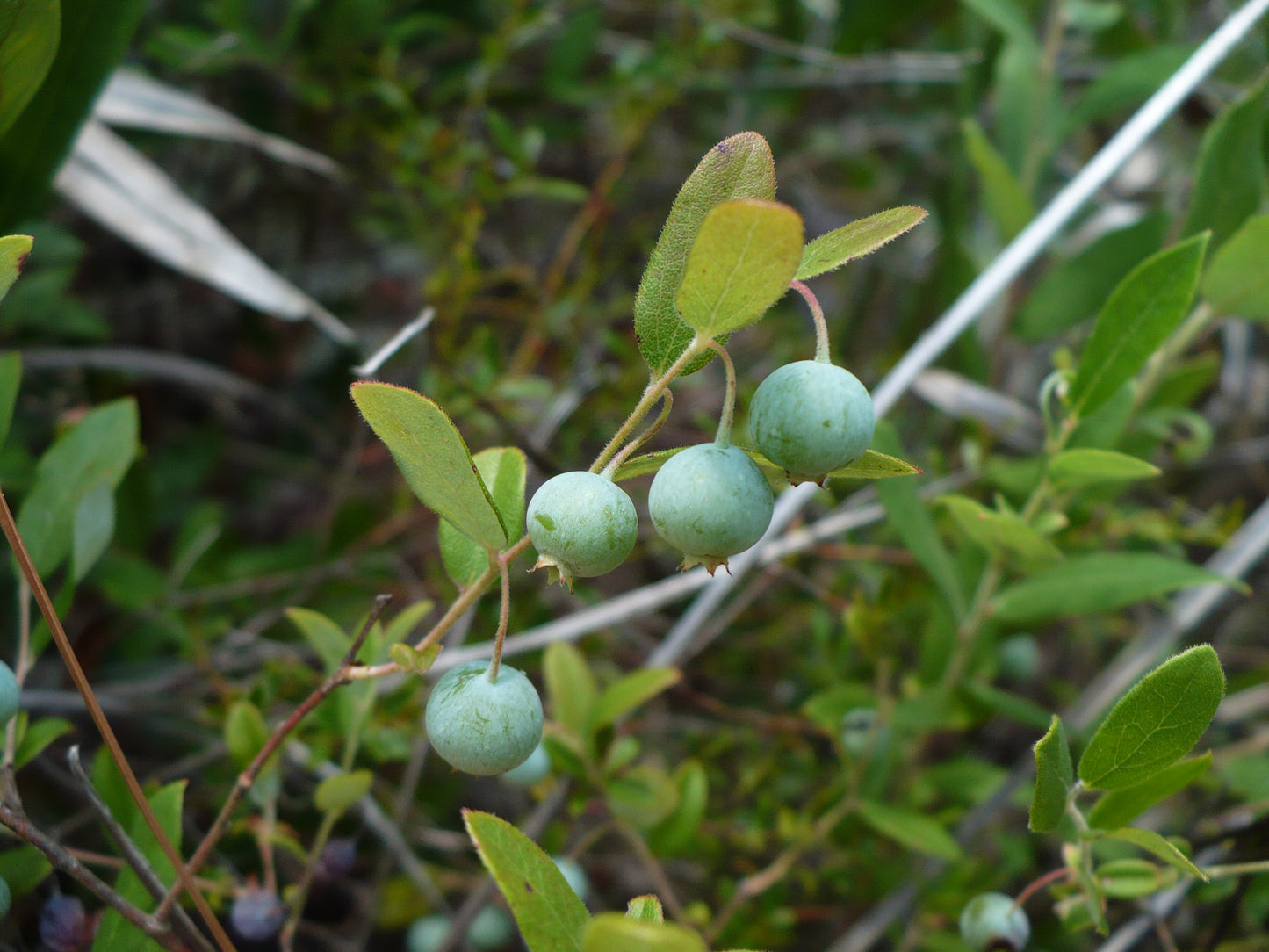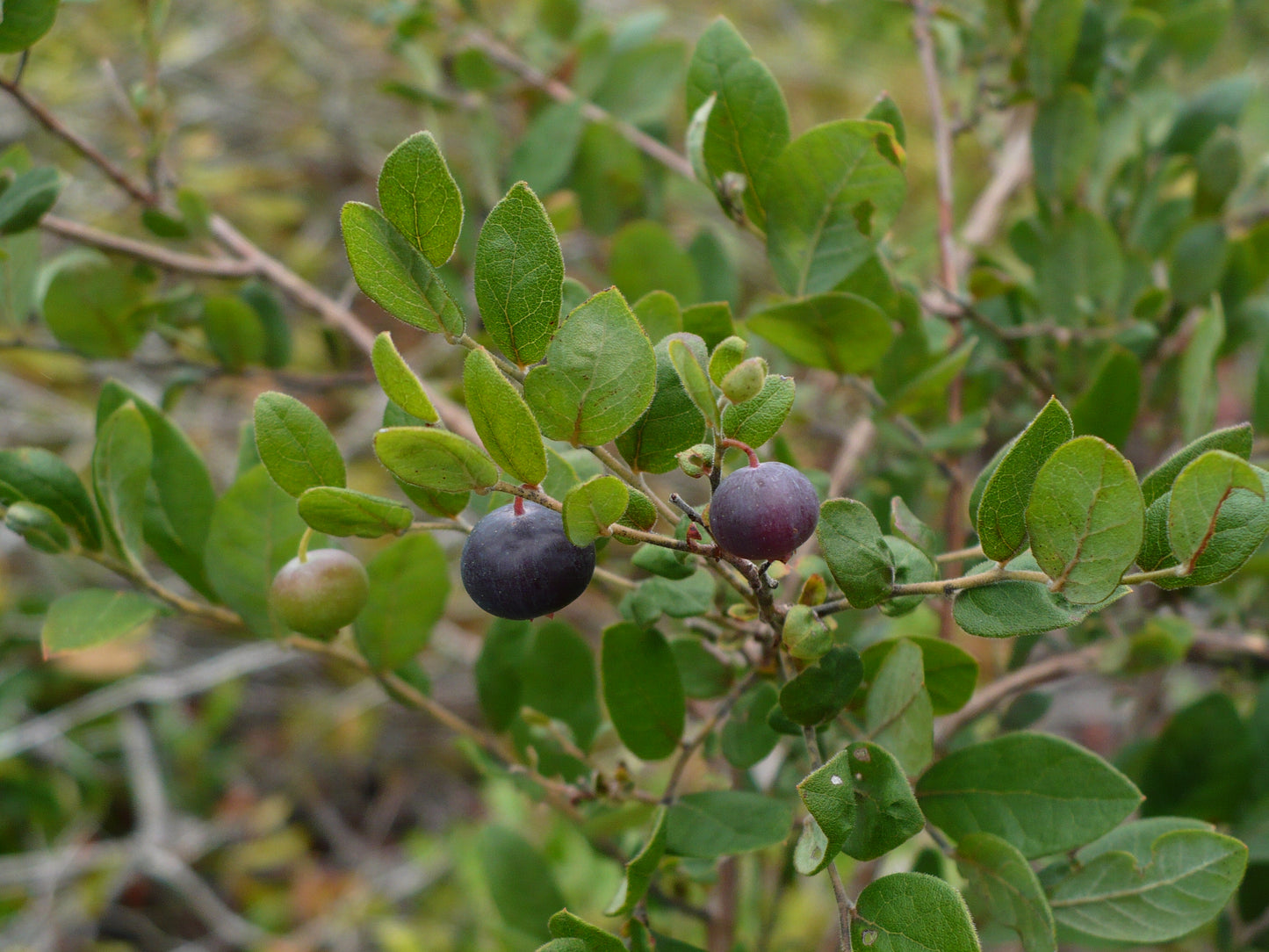Floridaseeds
Deerberry Vaccinium stamineum 100 Seeds USA Company
Deerberry Vaccinium stamineum 100 Seeds USA Company
Couldn't load pickup availability
Vaccinium stamineum, commonly known as deerberry or squaw huckleberry, is a shrub species that belongs to the Ericaceae family. This plant is native to eastern North America and can be found in various habitats, including woodlands, meadows, and open areas. Here are some key characteristics and information about Vaccinium stamineum:
- Appearance:
Deerberry is a deciduous shrub that typically grows to a height of 3 to 6 feet (1 to 2 meters) but can occasionally reach up to 10 feet (3 meters).
The leaves are simple, alternate, and oval-shaped, with finely toothed edges. They are dark green on top and paler beneath.
In spring, the shrub produces small, bell-shaped, pink to white flowers that are arranged in clusters.
The fruit of the deerberry is a berry that starts green and turns purplish-black when ripe. These berries are edible but are often quite tart.
- Habitat and Range:
Deerberry is native to the eastern United States and can be found from Maine to Florida, as well as westward to Texas.
It typically grows in wooded areas, open woodlands, and along the edges of forests.
- Ecological Importance:
Deerberry provides food for various wildlife, including birds and mammals. The berries are an important food source for wildlife species, contributing to the ecosystem's overall biodiversity.
- Uses:
Historically, Native American tribes used the berries of deerberry for food and sometimes for medicinal purposes.
The tart berries can be eaten fresh or used in cooking, although they are not as commonly consumed as other types of berries like blueberries.
- Cultivation:
If you're interested in cultivating deerberry, it's important to recreate its native habitat conditions. The shrub prefers well-drained, acidic soils and partial shade.
Deerberry can be a good addition to native plant gardens or wildlife-friendly landscapes.
It's worth noting that while deerberry is not as well-known or extensively cultivated as some other berry-bearing plants, it can still be an interesting addition to gardens that focus on native plant species or those aimed at supporting local wildlife. If you're considering growing deerberry, researching local gardening resources or native plant nurseries can provide you with more specific guidance tailored to your region's conditions.
Growing Instructions
Seed Treatment:
Deerberry seeds benefit from a process called stratification, which mimics the natural cold and moist conditions they experience during winter. Place the cleaned seeds in a plastic bag with some moist peat moss or damp paper towels, and then refrigerate them for a period of about 2 to 3 months.
- Planting:
After the stratification period, remove the seeds from the refrigerator.
Prepare a pot with well-draining, acidic soil. A mix of peat moss, sand, and perlite can be suitable.
Plant the seeds about 1/4 inch deep in the soil.
- Germination Conditions:
Place the pot in a location with indirect sunlight or partial shade.
Keep the soil consistently moist but not waterlogged. Using a spray bottle to mist the soil surface can help maintain moisture without disturbing the seeds.
- Germination Time:
Germination may take several weeks to a few months, as deerberry seeds have a variable germination period.
- Transplanting:
Once the seedlings have developed a few true leaves and are strong enough to handle, they can be transplanted into larger pots or directly into the ground.
Choose a planting location that mimics the natural habitat of deerberry, with acidic soil and partial shade.
Materials
Materials
Shipping & Returns
Shipping & Returns
Dimensions
Dimensions
Care Instructions
Care Instructions
Share










